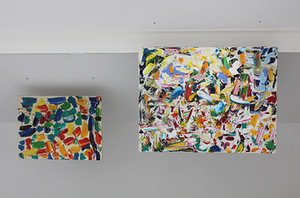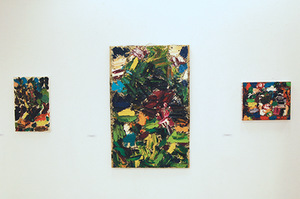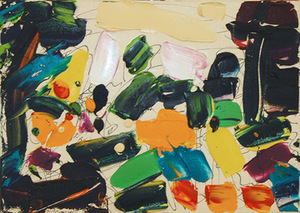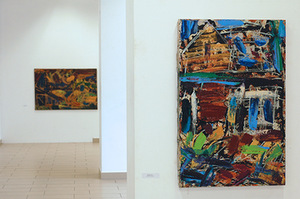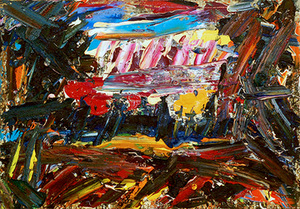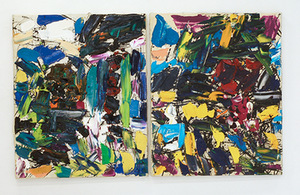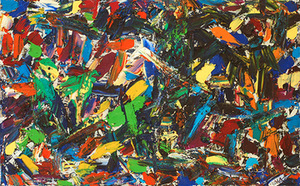Alfonsas Vilpišauskas and spiritual unity 3
In brief: Even though the exposition organized at the Meno Parkas gallery in Kaunas focused more on Alfonsas Vilpišauskas works of the last decade and painter's works at the Titanikas halls in Vilnius were presented as a retrospective, both exhibitions are linked by the artist's search for "good painting", aspiration of the impossible in the fine arts and the confession of the expressive painting.
Artist’s drawings found the bright colors and anxious structures in Lithuanian villages and homesteads. For the last decade, each summer, A. Vilpišauskas settles in the Šilavoto Davatkynas where he creates mystical garden panoramas; sometimes instead of a drawing squirting out all the content of the paint tube.
After seeing the retrospective in Vilnius, it feels as if it was confirmed that the master of painting did not find any "sentiments" in the city's atmosphere that would be worthy of a picture frame. Only a several interior motifs of his studio from the older works can be singled out ("Nefertiti", "Still life with a black glove") or images from inside the bus ("Journey"); portraits of the relatives are also rare in the exhibition. Meanwhile, big part of the paintings is not dedicated to city but to discovery of a special time and place in nature.
Many people on a hot summer day in the Lithuanian greenery cannot see any undertones or shades and quickly assess the curved lines of the flatlands, the stretches of cloudy sky with still standing hundred-year old gray cabins as monotonous and irrelevant images, but looking at this painting, Lithuanian landscape, to every skeptic appears as tropical forests or meteor showers in the sky.
In fact, a common central spot of the image is not what is foreign or unanticipated, but rather old opened shutters, well, apple tree or a heavy roof, pressuring an old hut deep into earth. Even if shaded by other colors and sizes, this "spot" gathers everything around it. Bright colors are repeated at the sides, now meaning something else; fragments of nature are shaping from them and also figures - strange but intelligible forms. It creates the illusion that from all the colors, the proportionality of their quantity and the traces of pencil a viewer can improvise his own landscape. The painting is so encoded, but so not abstract that you can see in it all the elements of the cozy world created in it - titles of the paintings also help you do that.









